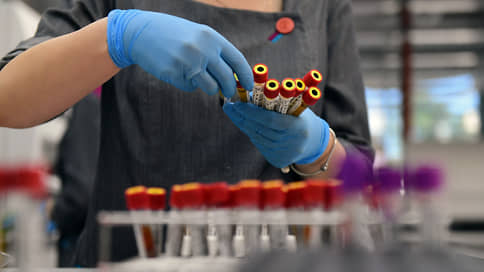The Ministry of Health suggests not checking schoolchildren to use cocaine

The Ministry of Health is going to update the procedure for conducting medical examinations of schoolchildren and students for drug consumption. The department believes that it is no longer necessary to check students for cocaine and pheniciplidine. Developing a new document, the experts relied on the results of the prosecutors of recent years. The Ministry of Health emphasized that the total incidence of narcological disorders among adolescents of 15-17 years has decreased by 40.9%since 2019.
The Ministry of Health has developed a new procedure for conducting preventive medical examinations of schoolchildren and students in order to identify illegal consumption of narcotic drugs and psychotropic substances. He will replace order The Ministry of Health No. 581n of October 6, 2014. The document has passed the stage of discussion on Regulation.gov.ru and sent to professional associations for further assessment. In case of adoption, he can enter into force on September 1, 2025.
According to the new order, as with the current, medical examinations will be carried out in relation to schoolchildren who have reached 13 years. Students over 15 years old can abandon the procedure. One of the parents or other legal representatives will be able to do this for younger students. In case of consent with a teenager, they first conduct an “information and clarification conversation”. Then the urine analysis is taken, which is sent to chemical toxicological examination (HTI). It is carried out in two stages – preliminary and, in case of detected traces of drugs, confirming.
The key change proposed by the Ministry of Health applies to the list of substances for the identification of which HTI is carried out: it is planned to exclude cocaine and phenciclidine from it.
Opiates, methadone, cannabinoids, synthetic catinones (including Mephedron), benzodiazepines, barbiturates, Kotinin in the project are preserved.
The Ministry of Health informed Kommersant that when developing a draft order, an analysis of the results of examinations for previous periods was analyzed: the changes were prepared taking into account law enforcement practice. As a result of the “conducted complex preventive work” over the past five years among minors, the incidence of mental disorders and behavioral disorders associated with the use of psychoactive substances has been steadily reduced, the Ministry of Health said. In 2019–2023, the total incidence of narcological disorders, according to the agency, among adolescents 15-17 years, decreased by 40.9%. The vast majority (94.7%) of minor patients who had experience in drug use are observed with a psychiatrist-narcologist “for a preventive purpose”, they have no dependence syndrome in the Ministry of Health. The department also drew attention to Kommersant that the current order No. 581N was adopted ten years ago.
The updated list of substances that students will check for, reflects current trends in drug consumption among youth, said Tigran Ananikyan, psychiatrist-narcologist of the Family Practice clinic.
“In recent years, opiates, methadons, cannabinoids and synthetic cathinones have gained the greatest widespread, while substances such as barbiturates and benzodiazepins are much less common,” the expert says. “The reasons why cocaine and phencicidlydin did not fall into the list at all, including difficulties with the delivery and spread of these drugs in Russia.”
The expert drew attention to the fact that Kotinin got into the new list – a metabolite of nicotine, which allows you to identify the number of smokers among children. The most common among young people are Mephedron and salt, since they, according to Tigran Anachyan, are “easier to get”. “Synthetic Katinones, such as Mephedron, are a serious problem,” the expert emphasizes. “Their prevalence has reached the scale comparable to heroin in the early 2000s. While heroin consumption was significantly reduced, methadone came in its place, which became popular among drug addicts. This emphasizes the need for constant monitoring and monitoring changes in drug consumption. ”






